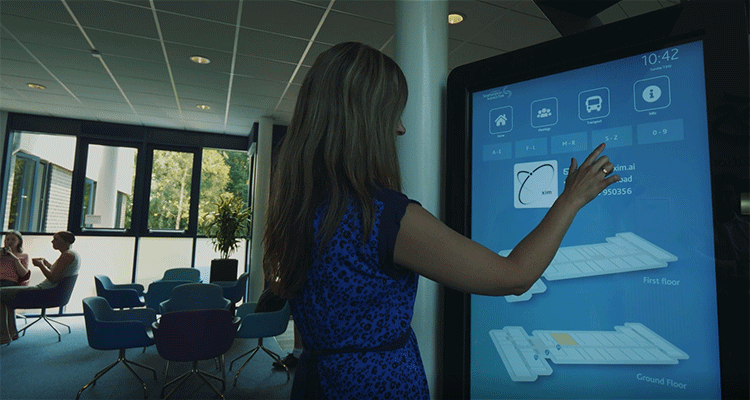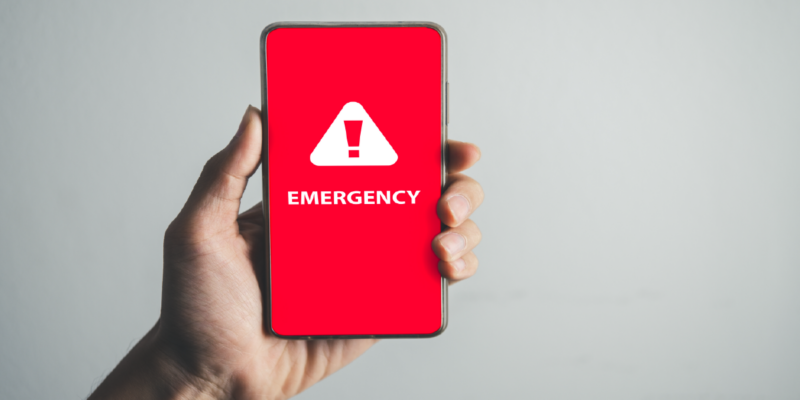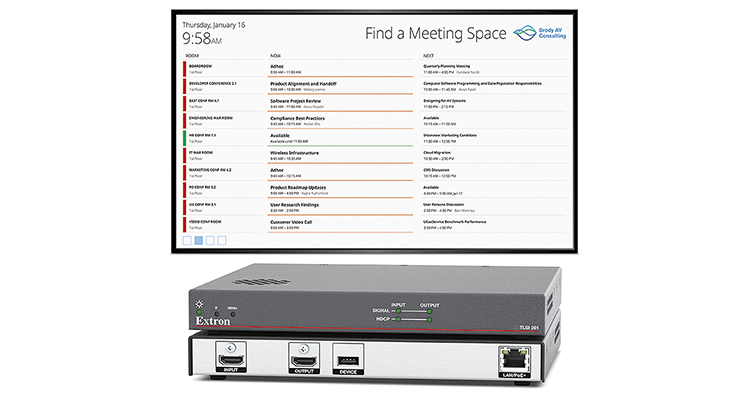Five Powerful Uses That Have Put Digital Wayfinding On The Map
 By Dominic Hinchliffe
By Dominic Hinchliffe
Sales Manager, TrouDigital
Traditional wayfinding can be observed in every walk of life: from colleges to hospitals and city centers to parks. Wayfinding helps individuals to simply get from point A to point B. However, the popularity of proprietary digital wayfinding solutions over the last few years can provide businesses with so much more value than just directing individuals from one location to another.
Rather than wayfinding signage that effectively says, “You Are Here. Here is X. Good luck.”, interactive digital wayfinding shows users the route by mapping out the way.
Here are five reasons that the latter option is becoming more frequently deployed:
1. Revenue-generating tool:
It’s no secret that placing a screen in a location that receives high footfall and dwell time is an attractive prospect to advertise on — think Times Square. The same model can be applied to a digital wayfinding screen. In fact, even more so. With an intuitive screen that can obtain user analytics — usage, age, gender — tailoring the most personalized advertisements is easy to do.
In commercial environment, such as shopping malls, big data and customer analytics helps guide potential customers to the shops and restaurants that are most popular at certain times of the day and periods of the year. For example, guiding users to a coffee shop is not as appropriate in the evening, nor is it as imperative to guide customers to a furniture store on a day where there are special student offers.
Alongside this, applying specific QR codes to appropriate times of the day for specific retailers can increase customer propensity to visit shops that offer QR discounts and special deals.
 2. Integration with other services:
2. Integration with other services:
A great way to keep users engaged is by displaying other services alongside wayfinding. For example, integrating with transport timetables and routes will encourage users to use local transport (an opportunity for third-parties to sponsor and leverage your screen network).
For corporate environments, integrating with meeting room booking systems and event schedules encourages individuals to use all of the facilities offered by a building. Alongside its use as a digital map, wayfinding solutions can also be used as bespoke directories for staff members and product catalogues. Having a directory of staff members is particularly useful for large educational institutions that have extensive disjointed faculties. Live product catalogues are similarly useful in retailers that experience large fluctuations in stock levels.
3. Updating content on the fly:
Printed maps and static signage often become out of date and incorrect, with offices reorganizing and shops relocating on a regular basis. With digital maps and directories, updates can be done in a matter of minutes and from remote locations. This removes the need to be constantly in close proximity to where a digital solution is situated.
Furthermore, the scheduling functionality of a cloud-based solution means that content can be scheduled days, weeks, and months in advance. So if you know that a shop is changing business owners, the appropriate changes can be made and scheduled in due time.
A side benefit of the technology is that digital hardware can be more durable than traditional alternatives like billboards and posters. An investment in digital wayfinding can pay off in the long run, alleviating the maintenance costs and time drain of replacing temporary mediums.
4. Improving your brand:
To help grow a brand, many companies will brand their digital wayfinding screens with their company logo, colors and fonts. More personalized screens are more enticing and will resonate in a user’s mind with greater effectiveness than a non-branded solution.
Beyond simply branding a screen, you might want to great creative with screen-savers during times of inactivity and show other types of content such as video and advertisements.
Used in this way, wayfinding stations can double up as a communication and marketing platform, ideally placed to reach passersby in concentrated areas. For example, showing adverts on your wayfinding screen might be a great way to cover the cost of the solution itself or even generate profit into the future.
5. Integrate with mobile devices:
Empowering users by integrating a wayfinding kiosk with users’ mobile phones enhances an individual’s experience.
Over the last decade, geo-location, beacon, and geo-fencing technology have vastly improved. The technological improvements make it easy to determine which individuals are inside a building or given area at any time. This is particularly useful for large organizations that need to keep track of what specially trained staff members are in a building at a given time, such as managers who are trained to deal with fire emergencies.
 Collected geo-location data can be also be used analytically to help better understand visitor analytics and user engagement. The practical opportunities opened up by this are multi-industry, from collecting visitor data in the heritage industry to patient information in healthcare.
Collected geo-location data can be also be used analytically to help better understand visitor analytics and user engagement. The practical opportunities opened up by this are multi-industry, from collecting visitor data in the heritage industry to patient information in healthcare.
Dominic Hinchliffe is the sales manager at TrouDigital, which provides bespoke digital wayfinding solutions.




